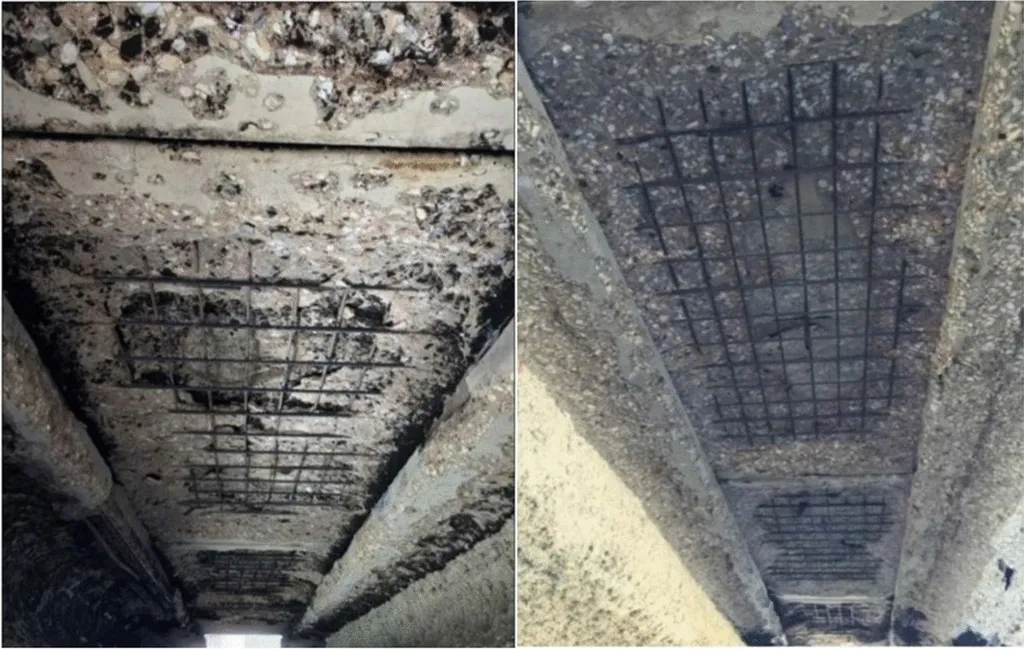In the heart of Iraq, researchers are unraveling the secrets of how fire impacts the strength of reinforced concrete columns, a discovery that could reshape safety standards and risk assessments in the energy sector. Karrar A. Al-Lami, a civil engineering professor at the University of Wasit, has led a groundbreaking study that delves into the performance of hollow reinforced concrete columns under fire conditions, published in the Tikrit Journal of Engineering Sciences, which translates to the Journal of Engineering Sciences from Tikrit.
Al-Lami and his team subjected sixteen hollow columns to axial compression loads until failure, varying the hollow diameter and flame temperature to understand their effects on the columns’ axial strength. The findings are striking: as the flame temperature increased, the axial load capacity of the columns dropped significantly. “The reduction in axial load capacity ranged from 20.10% to 68.42% for temperatures between 300 °C and 700 °C,” Al-Lami explained. This means that as fires intensify, the structural integrity of these columns diminishes rapidly, posing serious risks to buildings and infrastructure.
The study also revealed that columns with larger hollow diameters experienced a more substantial reduction in load capacity under identical burning conditions. This insight is crucial for engineers designing structures that must withstand potential fire hazards. “Beyond a hollow diameter of 25.4 mm or a fire flame temperature of 300 °C, the axial stiffness of columns was significantly reduced,” Al-Lami noted. This finding underscores the importance of considering both the size of the hollow core and the potential fire exposure when designing reinforced concrete columns.
The implications for the energy sector are profound. Energy facilities, such as power plants and refineries, often house critical infrastructure that must withstand extreme conditions, including fires. Understanding how reinforced concrete columns behave under fire exposure can help engineers design safer, more resilient structures. This research could lead to the development of new safety protocols and building codes, ensuring that energy facilities are better equipped to handle fire-related incidents.
Moreover, the study highlights the need for ongoing research into the behavior of construction materials under extreme conditions. As the energy sector continues to evolve, so too must the materials and techniques used to build and maintain its infrastructure. Al-Lami’s research is a step in this direction, providing valuable insights that could shape future developments in the field.
In the broader context, this study is a testament to the importance of scientific inquiry in enhancing safety and risk assessment. By understanding the fundamental behaviors of construction materials, engineers and architects can create structures that are not only robust but also adaptable to a wide range of environmental challenges. As the energy sector continues to grow and diversify, the need for such research will only become more pressing.
Al-Lami’s work, published in the Tikrit Journal of Engineering Sciences, serves as a reminder that the pursuit of knowledge is a continuous journey, one that requires collaboration, innovation, and a deep commitment to improving the world around us. As we look to the future, the insights gained from this study will undoubtedly play a crucial role in shaping the energy sector and beyond.

